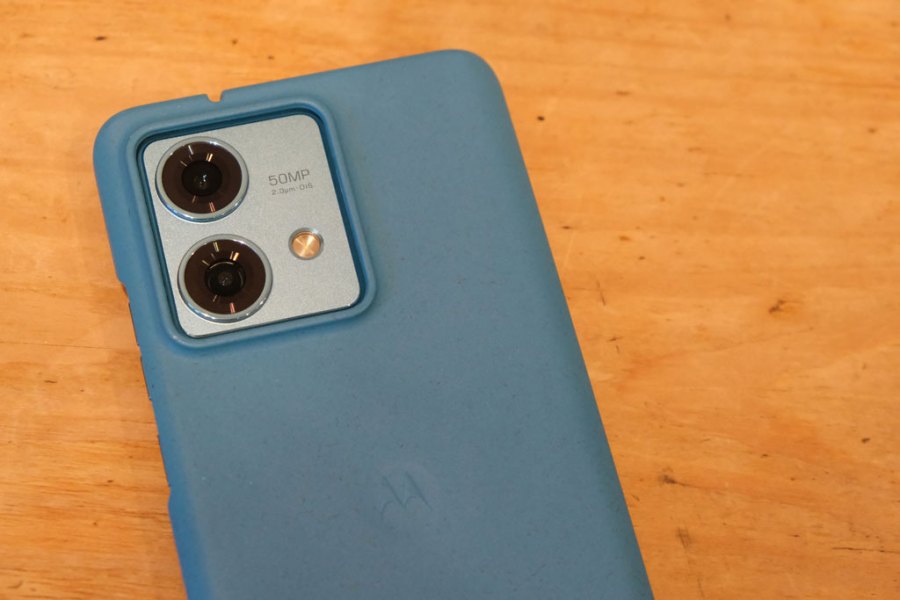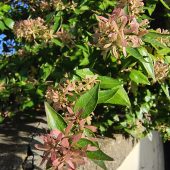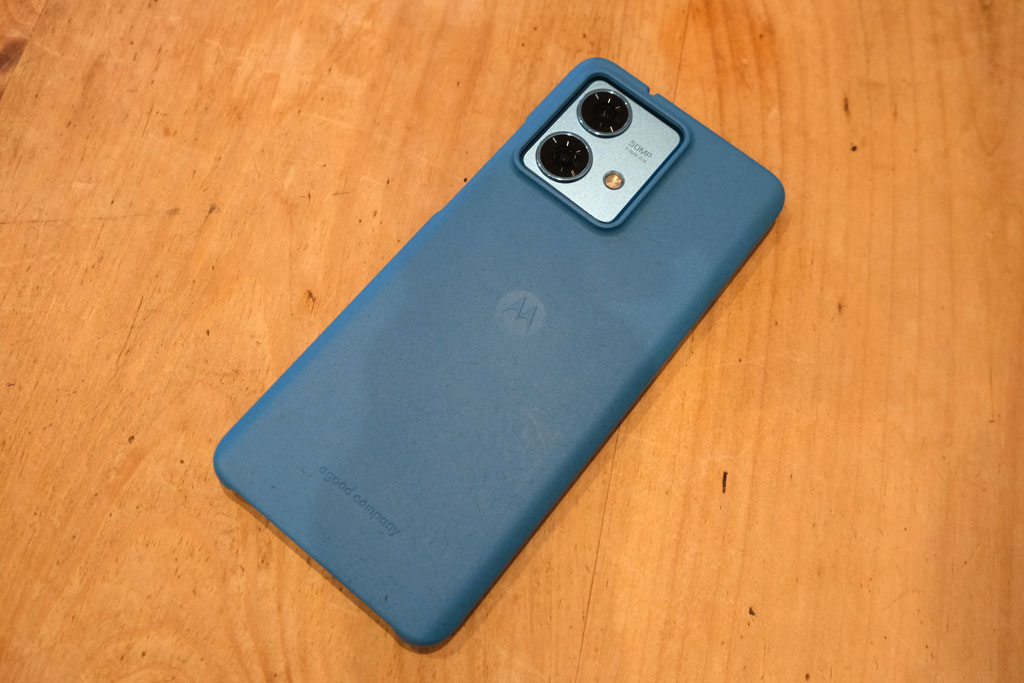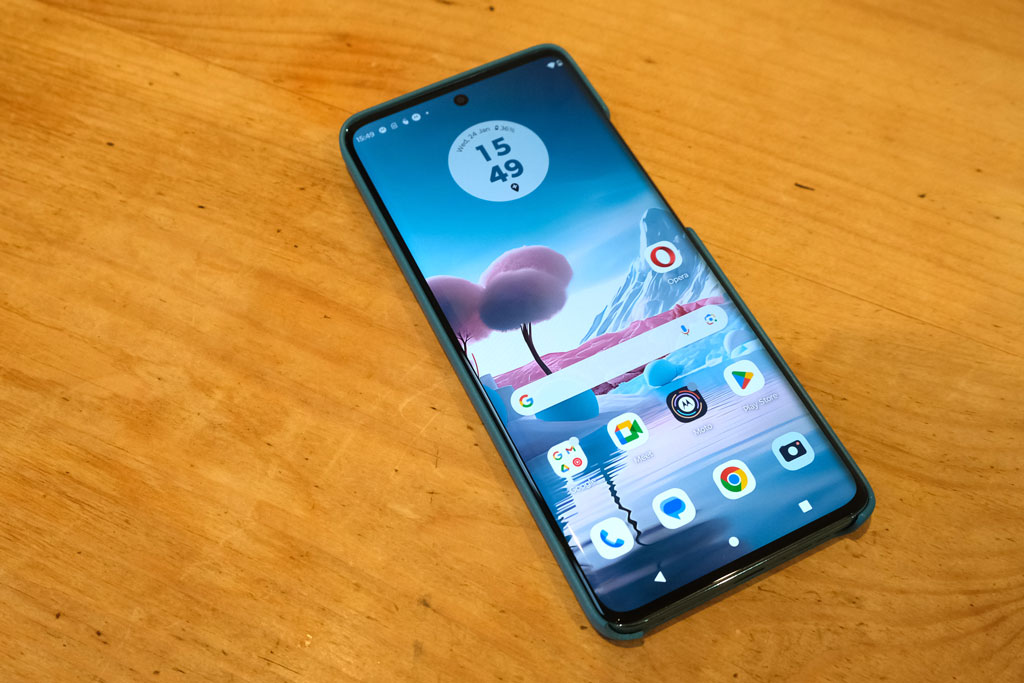Amateur Photographer verdict
A compelling budget smartphone that looks and feels more expensive than it is equipped with a decent camera system- Good main camera in most situations – including low-light
- Great value for budget price
- IP68 rating
- Colour and detail rendering is sometimes too much
- Some may find ultrawide camera lacking
These days, most flagship smartphones are priced around $1000/ £1000, with budget options usually being priced at half that, if sometimes less. Available at just under £300 new, the Motorola Edge 40 Neo can be found cheaper than many of the best budget phones, but is it a good enough overall package for photographers? Isabella Ruffatti finds out.
Key features at a glance:
- 50MP f/1.8 wide camera with OIS, PDAF
- 13MP f/2.2 ultrawide camera, PDAF
- 32MP f/2.4 selfie camera
- 6.55in P-OLED screen, 144Hz, Corning Gorilla Glass 3
- 5000 mAh battery
- 8GB+128GB, 12GB+256GB options
- Android 13
- Size: 159.6 x 72 x 7.9mm
- Weight: 170g
How we test phones
We review smartphones from the perspective of choosing one for its photography and camera performance. We look at what the Motorola Edge 40 Neo offers, and the features included for photography and video, paying particular attention to the cameras on the phone, photo editing capabilities, as well as the output from each different lens.
Hardware, design and features
The Motorola Edge 40 Neo is the successor to the Motorola Edge 30 Neo and sits below the mid-range Motorola Edge 40. It has a double camera system, much like other budget phones. The 64MP main camera of the Edge 30 Neo is now a 50MP with OIS in the Edge 40 Neo, and the phone has up to 4K video recording.
The phone looks and feels more expensive than it is, with its rounded edges and availability in three Pantone-verified exclusive colours (I got the Caneel Bay option, which I found to be very pretty). Additionally, each phone comes with a 100% recycled case in the same Pantone-certified colour that has a Pantone logo on the rear.
At 7.76mm thick and 170g, it is so thin and light it is easy to feel as though you can’t get a grip on it. I did manage not to drop it once, however, and in case you do drop the phone, it’s protected by the IP68-level dust and water resistance often seen in flagships, which is comforting to know.
The Edge 40 Neo’s 6.5-inch pOLED display with 144Hz refresh rate is bigger than the Edge 30 Neo, and it is curved around the edges of the phone. It also runs on Android 13 and comes with 68W fast charging as well as an in-display fingerprint sensor.
Performance
This phone has two camera modes: natural and auto-enhance. Automatic HDR (high-dynamic range) is also used to combine a number of shots for an enhanced dynamic range.
The main 50MP camera has an f/1.8 aperture and optical image stabilisation (OIS). It gives pixel-binned 12.5MP images and probably, as to be expected, had the best results overall with vibrant but natural-looking colours.

It even fared surprisingly well in low light when I took it to a Christmas Street Skate in London and took low-light portraits of people on skates dressed up as Santas, Christmas trees and reindeer.
The results had little to no blur and a fair amount of detail. It is worth noting that the phone has Auto Night Vision that can be turned on and off.
The auto-enhance feature sometimes goes a bit too far with enhancing detail and saturation for my taste and it’s even worse when coupled with the 13MP ultra-wide angle camera.

The photos that were taken with the ultra-wide angle camera were also visibly lacking in the amount of detail when compared to the main camera. When it comes to using the zoom, while 0.5x and 1x gave me decent results, anything past 2x quickly becomes grainy and is best avoided.
The Motorola Edge 40 Neo has dedicated Macro and Portrait modes and results from both were decent. The front-facing 32MP selfie camera has an f/2.4 aperture and gives pixel-binned 8MP images. I got some nice results out of it, though it did suffer from some noise in low light conditions.

When it comes to video, this phone offers up to 4K video at 30fps on all three cameras. There was little shakiness and results were mostly good with quite a lot of detail.
This phone also comes with a Pro mode that works on all cameras, which allows you to change features such as the focus, white balance, shutter speed, and ISO. A small live histogram can be seen in the corner.
Value for money
Disclaimer: I have not used any other Motorola phones before, other than a Motorola flip phone, which as a preteen in the mid-2000s, was among my very first phones. Since then, I’ve gone through several Apple iPhones as well as budget Samsung and Google phones. My current phone is the Google Pixel 7a.

Using the Motorola Edge 40 Neo’s cameras did not feel too different to the Pixel 7a’s. This is because the Motorola Edge 40 Neo’s camera specs are similar to that of many of the best budget phones you can buy including Pixel 7a, as well as the Samsung Galaxy S22 and the Samsung Galaxy A54.
The results between the Pixel 7a and the Edge 40 Neo’s main camera weren’t too different either but on the whole, I prefer the detail and colour rendition of the Google Pixel 7a to the Edge 40 Neo’s.

The Google Pixel 7a and Samsung Galaxy A54 can be found for around $450 / £450 and even for less, around $400 / £400. This is worth noting as even when it is the lower priced option, the gap between the Edge 40 Neo and other affordable phones could be smaller and you won’t be saving as much.
The Motorola Edge 40 Neo may not be the most affordable option depending on what country you’re buying it in either.
Price isn’t the only advantage the Motorola Edge 40 Neo has over other budget phones. The Motorola Edge 40 Neo has IP68 rating, for example, while the Pixel 7a and Galaxy A54 have IP67. It has a 32MP selfie camera, as opposed to the Pixel 7a’s 13MP selfie camera.
Motorola Edge 40 Neo: Verdict
With the Motorola Edge 40 Neo, you will get a lightweight, mid-range phone with a flagship phone design that also incorporates many flagship-level features like a big screen and fast charging for a competitive price.

While it may not have a 200MP camera that can film in 8K, the Motorola Edge 40 Neo will likely work just fine as a good budget option for many people. What it will come down to in the end mostly depends on how much you’re willing to spend and what you want from this phone.
The Motorola Edge 40 Neo is altogether, as a phone, a very good option. All in all, you do get quite a lot for very little money. However, to photographers, it may fall somewhat short as a camera system.
For photographers, it offers a main camera that is okay, working well in most conditions, whether you’re shooting stills or video. You also get a good selfie camera. If you are not a fan of AI auto-enhancement like me, you can always turn it off.

The curved screen, while impressive on paper, was less impressive while using the phone and I found it annoying as I kept accidentally clicking on the back or home buttons when holding the phone up to take photos with it.
If you’re looking for a capable phone with a decent stills camera and 4K video capabilities but don’t want to spend more than $500 / £300, this phone is one to consider.
But if you are willing to bridge the gap and spend more, there are other budget options that might fit the bill better without taking you into flagship territory.

For more affordable options have a look at our guide to the best budget smartphones, or have a look at the best flagship camera phones if you have a higher budget to spend.
Follow AP on Facebook, Twitter, Instagram, YouTube and TikTok.

















